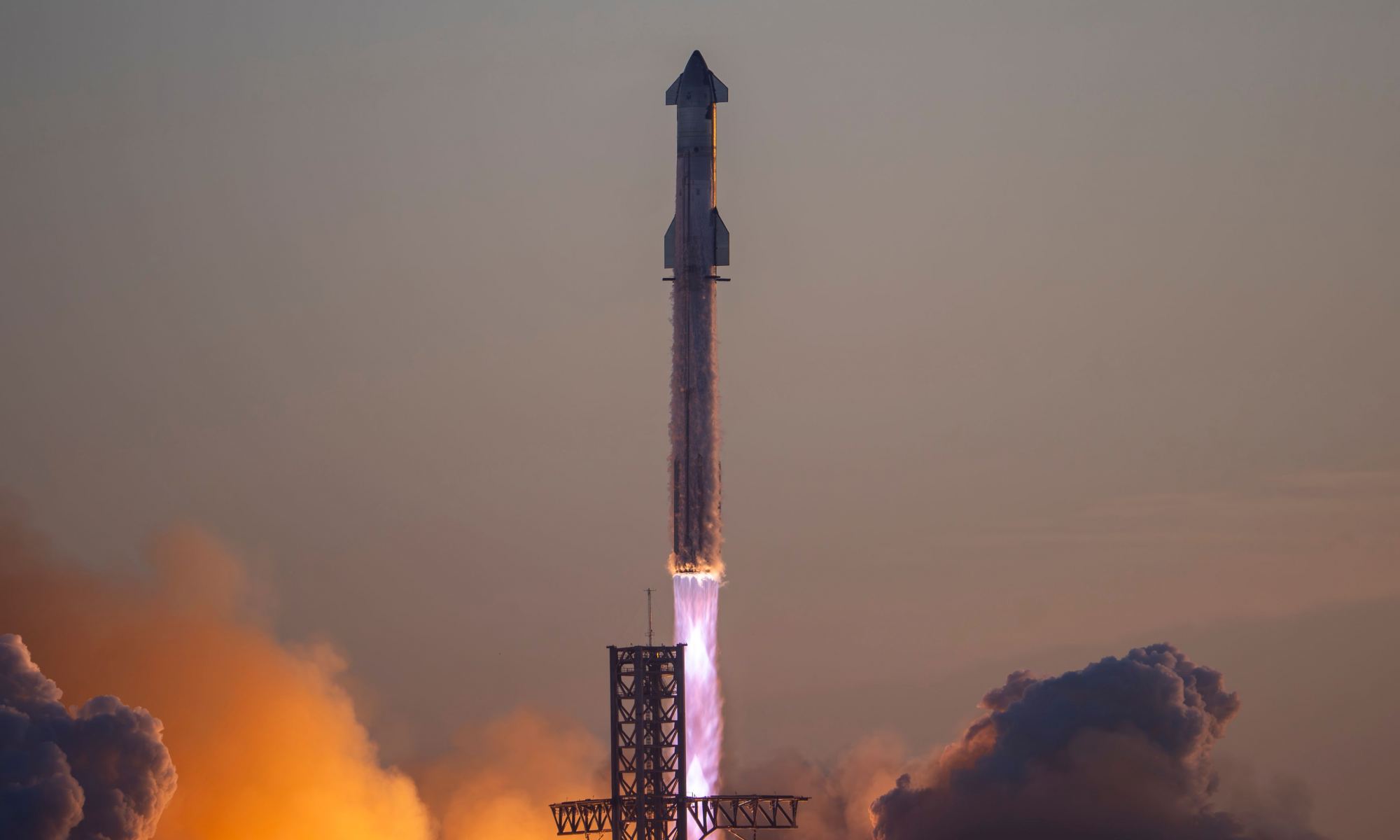The Starship/Super Heavy is the world’s first fully reusable launch system and the most powerful rocket in history. It is also the key to fulfilling SpaceX’s long-term vision of broadband satellite internet, delivering crews and cargo to the lunar surface, and creating the first self-sustaining city on Mars. After years of development, design changes, and “hop tests” at the company’s launch facility near Boca Chica, Texas, orbital test flights finally began in April last year. The first two flights ended in the loss of both vehicles, though the second flight saw the Starship prototype reach orbit.
According to a recent statement from the company, Flight Test-3 (FT-3) could be happening as soon as Thursday, March 14th, pending approval of the Federal Aviation Administration (FAA). The event will be covered in a live webcast streaming on the company website and SpaceX’s official X (Twitter) account.

The inaugural flight test witnessed the fully-stacked SN24 and BN7 prototypes successfully lifting off from the launch pad and reaching an altitude of about 40 km (25 miles) above sea level. Unfortunately, the SN24 failed to separate from the BN7 a few minutes into the flight, causing the vehicle to fall into an uncontrolled tumble. Ground teams then activated the on-board explosives to detonate both vehicles to avoid a severe crash landing. After an investigation by the FAA, SpaceX upgraded its launch pad and prepared for round two.
The second flight test took place the following November and saw the SN25 and BN9 prototypes successfully launch and seperate at an altitude of 70 km (43 mi). The booster stage was lost about 30 seconds later, exploding over the Gulf of Mexico, while the SN25 reached an altitude of about 148 km (92 mi) – just shy of the company’s goal of 150 km (93 mi). The SN25 also exploded after reaching space, reportedly because its flight termination system was activated. According to the company statement, the third flight will incorporate the lessons learned from their previous attempts:
“Starship’s second flight test achieved a number of major milestones and provided invaluable data to continue rapidly developing Starship. Each of these flight tests continue to be just that: a test. They aren’t occurring in a lab or on a test stand, but are putting flight hardware in a flight environment to maximize learning.”
This is in keeping with SpaceX’s rapid prototyping and iterative development approach, where lessons from previous tests (and improvements) are incorporated along the way. According to the timeline included in the statement, the flight test will include “a number of ambitious objectives,” including the successful ascent burn of both stages, a “flip maneuver” by the booster after separation, followed by the booster making a propulsive landing in the Gulf of Mexico. The Starship‘s payload door will also be opened roughly 12 minutes into the flight (and closed again about 16 minutes later) to test the spacecraft’s ability to deliver satellites and other payloads to space.
Other objectives include a propellant transfer demonstration and the first ever re-light of a Raptor engine in space. This will be followed by a controlled reentry of the Starship, which will splash down in the Indian Ocean about an hour after launch. Earlier today, an infographic was posted on X by space artist Tony Bela (X handle @InfographicTony) that depicts the various stages of Flight Test-3 (shown below). With the help of Bill “LunarCaveman” (@LunarCaveman), the infographic provides a detailed rundown of the flight test and everything it aims to accomplish.
The live webcast will begin about 30 minutes before liftoff, though the timetable is still subject to change. Those interested in catching it live are encouraged to check out X @SpaceX for further updates.
Further Reading: SpaceX

